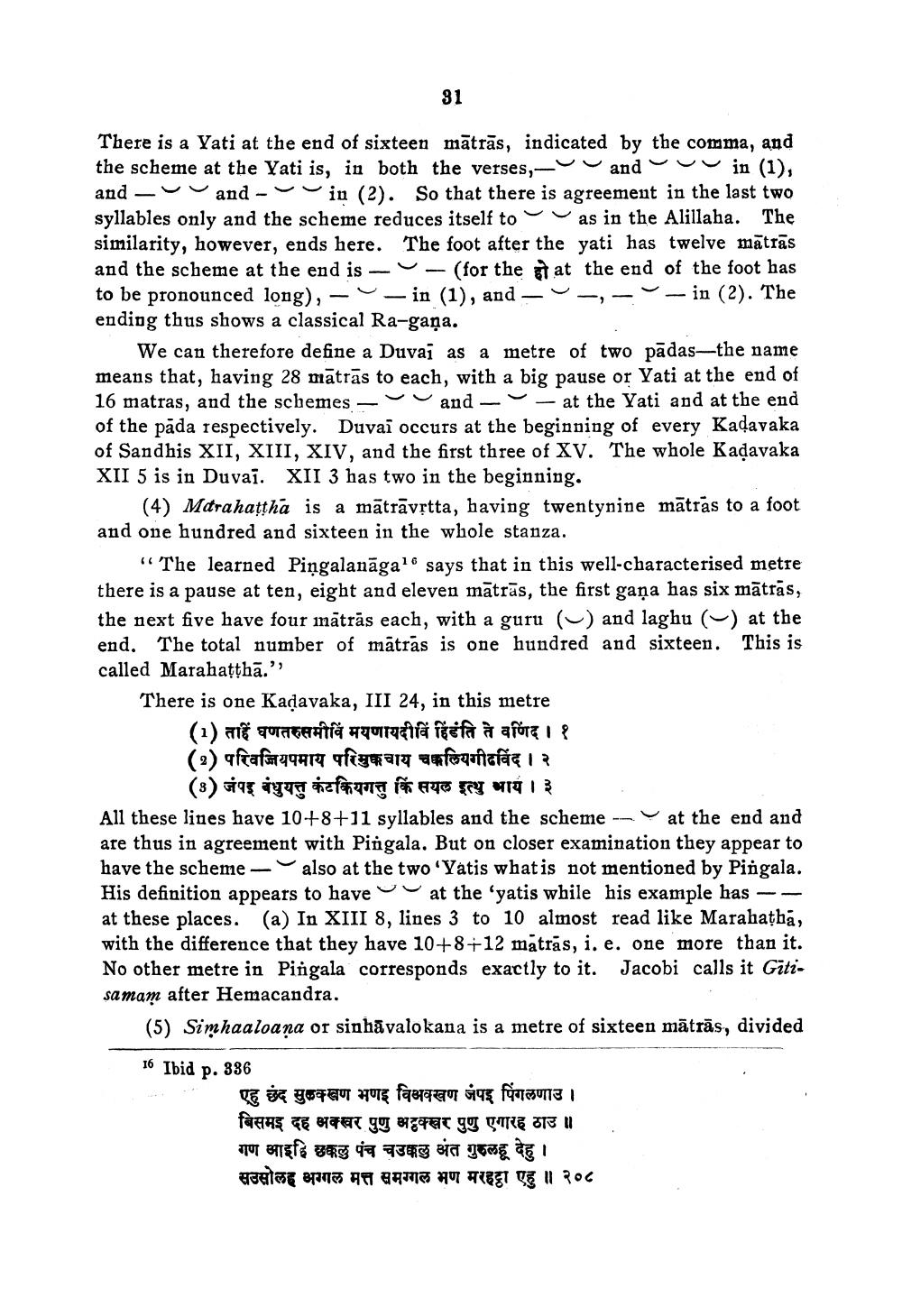________________
31
There is a Yati at the end of sixteen matras, indicated by the comma, and the scheme at the Yati is, in both the verses,- and in (1), andand in (2). So that there is agreement in the last two syllables only and the scheme reduces itself to as in the Alillaha. The similarity, however, ends here. The foot after the yati has twelve mātrās and the scheme at the end is (for the at the end of the foot has to be pronounced long), --in (1), and in (2). The ending thus shows a classical Ra-gana.
We can therefore define a Duvai as a metre of two padas-the name means that, having 28 mātrās to each, with a big pause or Yati at the end of 16 matras, and the schemes and 7 at the Yati and at the end of the pada respectively. Duvai occurs at the beginning of every Kadavaka of Sandhis XII, XIII, XIV, and the first three of XV. The whole Kaḍavaka XII 5 is in Duvai. XII 3 has two in the beginning.
(4) Marahaṭṭha is a matrāvṛtta, having twentynine matras to a foot and one hundred and sixteen in the whole stanza.
"The learned Pingalanaga1 says that in this well-characterised metre there is a pause at ten, eight and eleven mātrās, the first gana has six mātrās, the next five have four mātrās each, with a guru (~) and laghu (~) at the end. The total number of matras is one hundred and sixteen. This is called Marahaṭṭhā."
There is one Kaḍavaka, III 24, in this metre
(1) atë qvagantià aqunqchiâ îëëfà à afórą | ? (2) परिवज्जियपमाय परिमुक्कचाय चकलियगीढविंद | २ (3) जंपर बंधुयत्तु कंटकियगत्तु किं सयल इत्थु भाय । ३
at the end and
All these lines have 10+8+11 syllables and the scheme are thus in agreement with Pingala. But on closer examination they appear to have the scheme - also at the two 'Yatis what is not mentioned by Pingala. His definition appears to have at the 'yatis while his example has -- at these places. (a) In XIII 8, lines 3 to 10 almost read like Marahaṭhā, with the difference that they have 10+8+12 matras, i. e. one more than it. No other metre in Pingala corresponds exactly to it. Jacobi calls it Gitisamam after Hemacandra.
(5) Simhaaloana or sinhavalokana is a metre of sixteen mätrās, divided
16 Ibid p. 336
एहु छंद सुक्खण भइ विभवखण जंपर पिंगलणाउ । बिसमइ दह अक्खर पुणु अट्ठक्खर पुणु एगारह ठाउ ॥ गण आदि छकल पंच चउक्कल अंत गुरुलहू देहु । उसोलह अग्गल मत्त समग्गल भण मरहट्ठा एहु ॥ २०८




